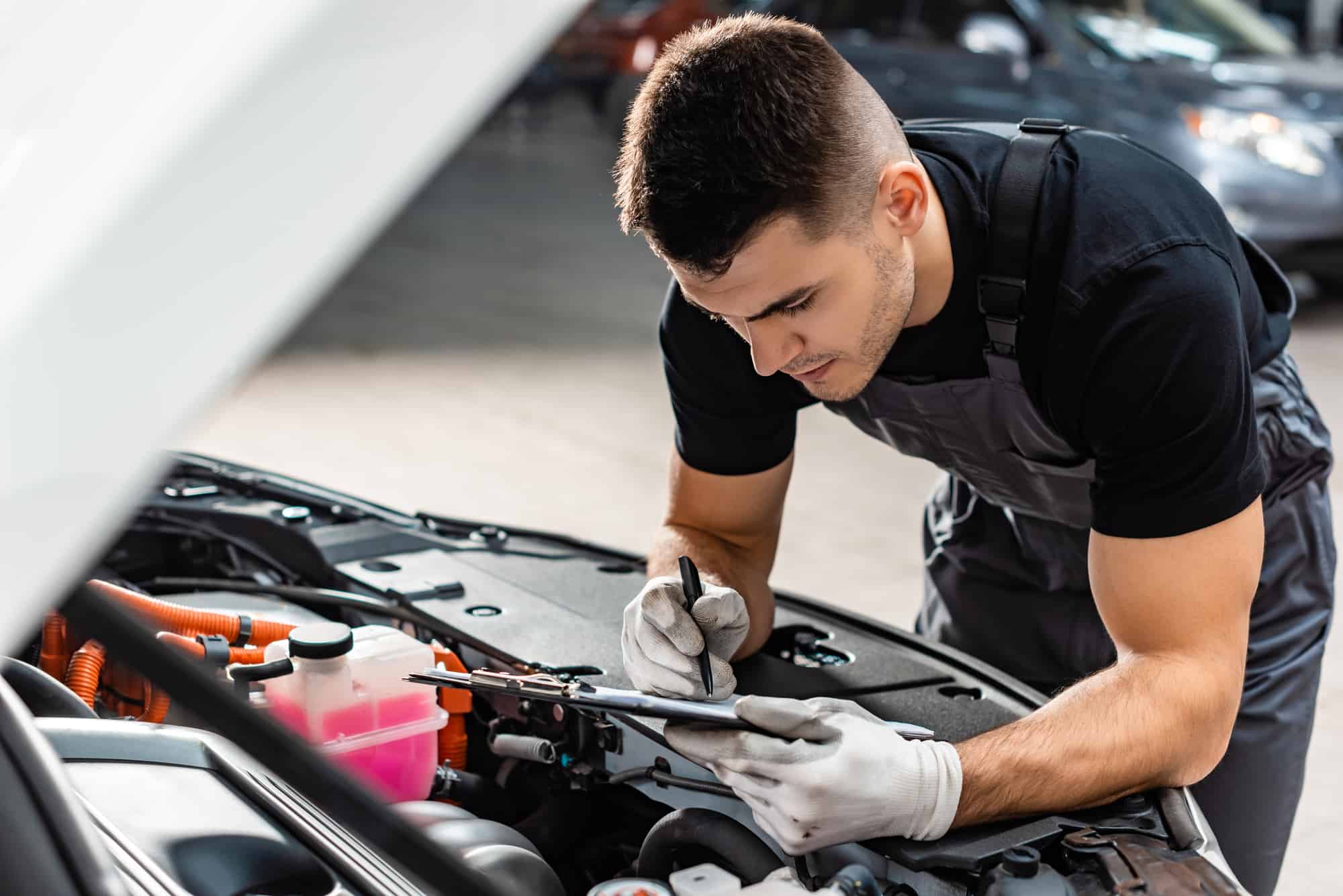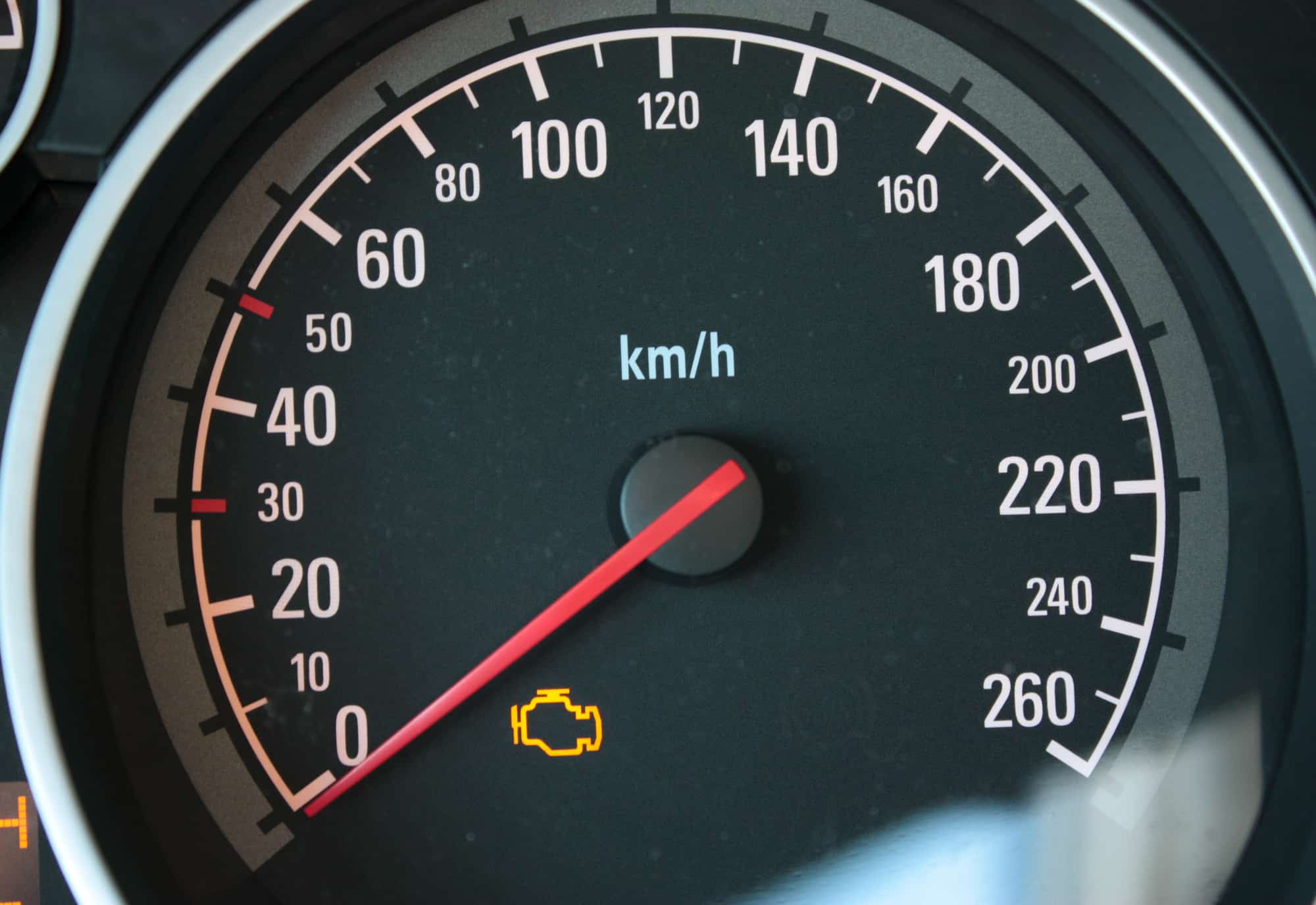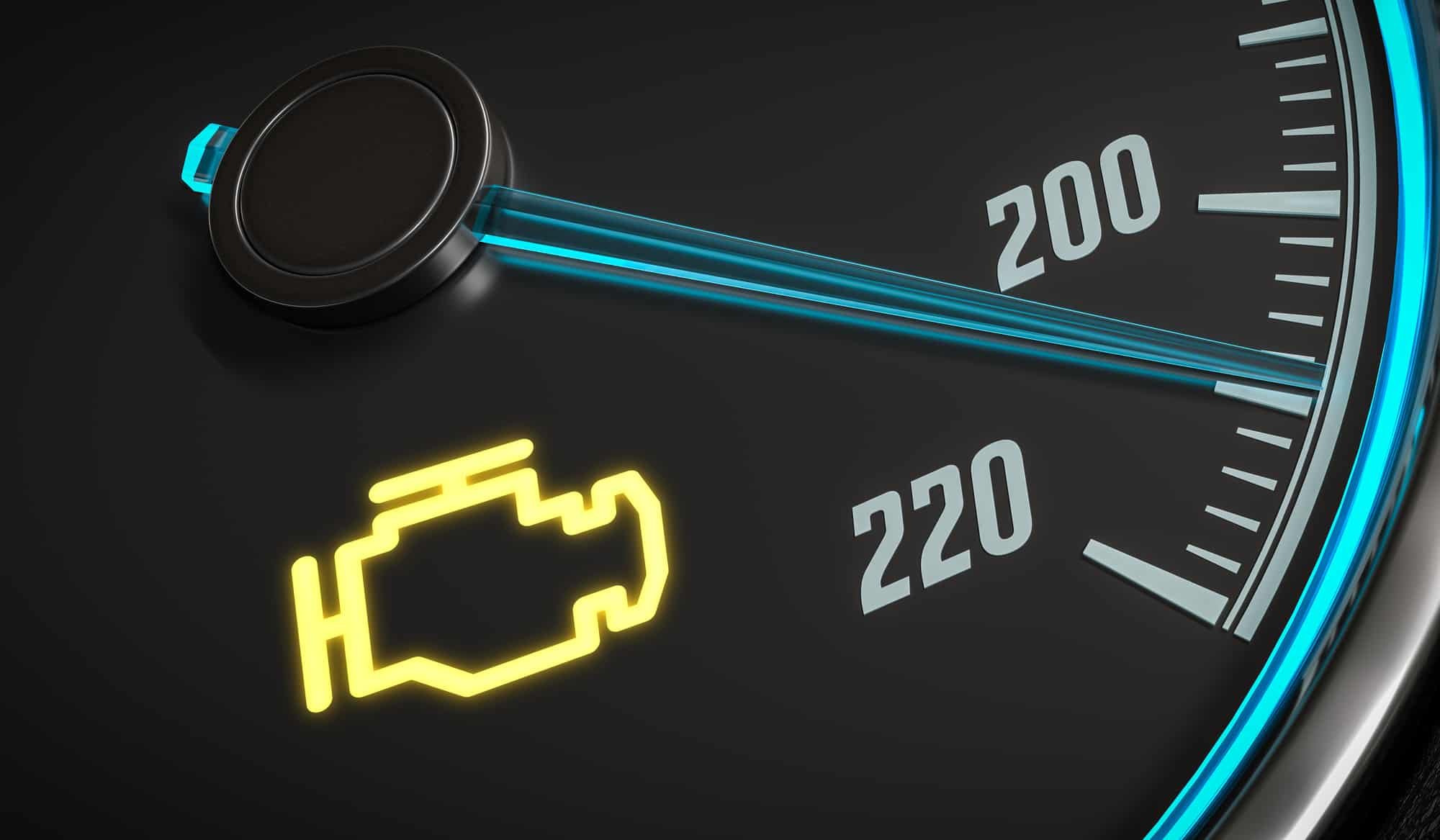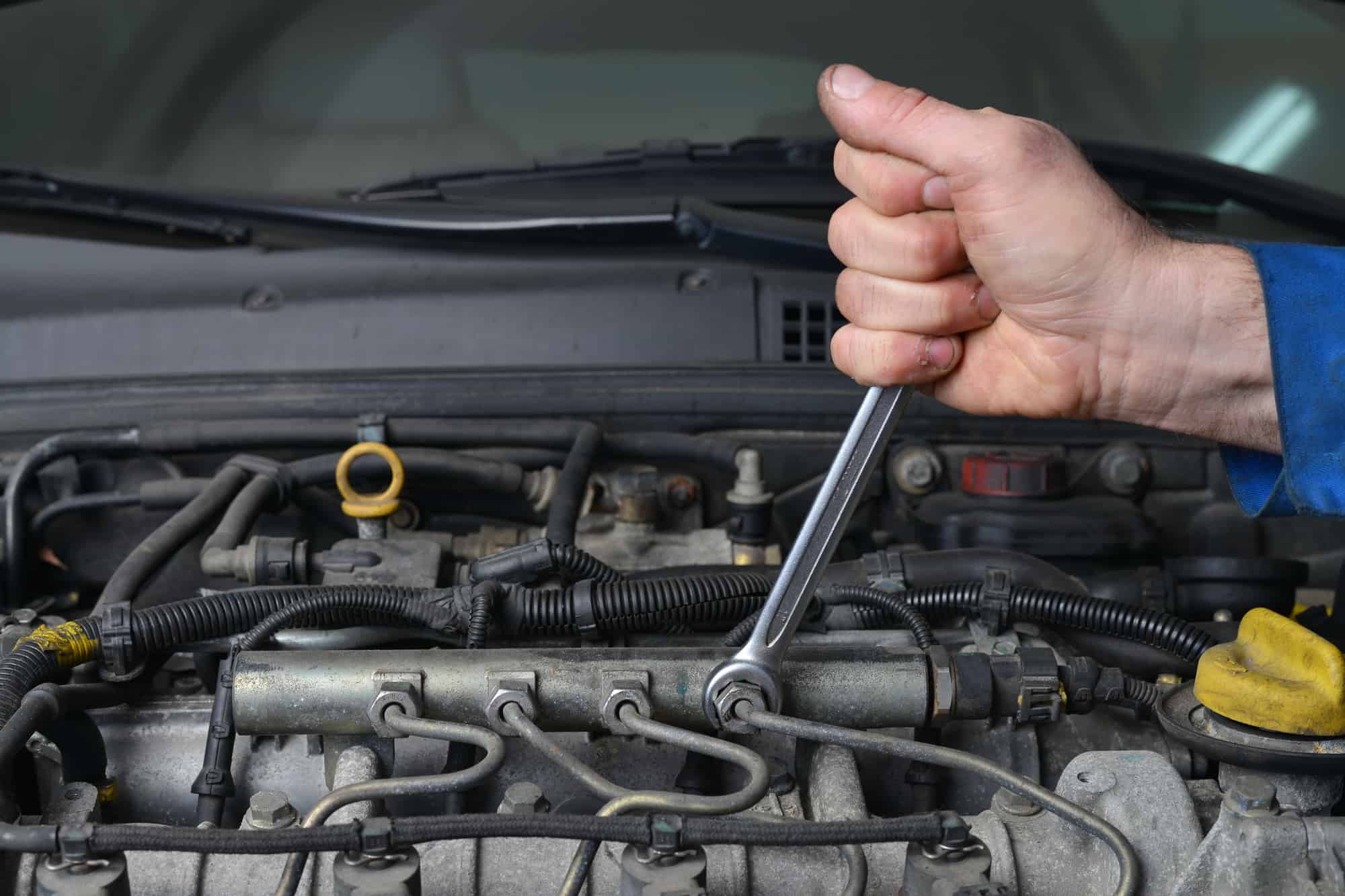The check engine light is one of the more important warning lights on a car’s dashboard, designed to alert you to potential problems with your car. So why is it that sometimes the check engine light can come on and then switch off when accelerating?
The most common causes of the check engine light flashing when your car is accelerating can include engine misfiring, low oil pressure, bad spark plugs, faulty oxygen sensors, bad injectors or problems with the engine cooling system.
In this article, we’ll explore some of the most common reasons why the check engine light comes on and off when accelerating, and what you can do to diagnose and fix the issue.
Why Does My Check Engine Light Come On And Off When Accelerating?
The check engine light can come on and off when accelerating due to a variety of reasons.
The check engine light is part of a warning system that alerts you to potential issues with your vehicle. It is part of the onboard diagnostics (OBD) system that monitors the engine’s performance and emissions.
When the OBD system detects a problem, it triggers the check engine light to turn on and a diagnostic trouble code is also usually stored in ECU memory
If the check engine light turns on and then goes off specifically during acceleration, it may indicate that there is a problem with a component or system in your vehicle that is affected by changes in engine load and performance.
Here are a few potential reasons why this may occur:
Reason 1. Loose Gas Cap
A loose gas cap can cause a check engine light to come on and off when accelerating because it can trigger the vehicle’s evaporative emission control system (EVAP).
The EVAP system is designed to prevent harmful fuel vapors from escaping into the environment, and it works by storing these vapors in a charcoal canister until they can be burned by the engine.
If the gas cap is loose or missing, it can cause fuel vapors to escape from the gas tank, which can trigger the EVAP system to detect a leak. When this happens, the check engine light will come on to alert the driver to the issue.
Reason 2. Bad Spark Plugs
Bad spark plugs can cause a check engine light to come on and off when accelerating because they can affect the engine’s ability to properly combust fuel.
When the spark plugs are worn or damaged, they may not create a strong enough spark to ignite the fuel in the engine’s cylinders. This can cause a misfire, which can result in a variety of symptoms, including rough idling, poor acceleration, and reduced fuel economy.
A misfire can damage the catalytic converter and trigger the check engine light.
Reason 4. Oxygen Sensor Malfunction
Faulty oxygen sensors can cause a check engine light to come on and off when accelerating because they measure the amount of unburned oxygen in a car’s exhaust system.
When an oxygen sensor fails, it sends inaccurate data to the car’s computer, which can cause the engine to run too rich or too lean. This can lead to poor engine performance, rough idle, reduced fuel economy, and emissions problems.
As a result, the car’s computer may turn on the check engine light to alert the driver of a problem.
Reason 5. A Partially Clogged Catalytic Converter
A clogged catalytic converter can cause a check engine light to come on and off specifically when accelerating because it restricts the flow of exhaust gases, which can cause a buildup of pressure in the exhaust system.
This can trigger the car’s sensors to detect a problem, causing the check engine light to come on. When accelerating, the engine requires more power, which can cause the pressure in the exhaust system to increase, exacerbating the problem.
As a result, the check engine light may flicker on and off when accelerating.
Reason 6. Intermittent Sensor or Wiring Issue
Intermittent sensor or wiring issues can cause a check engine light to come on and off when accelerating because they can cause the car’s computer to receive inconsistent or incorrect data.
If there is a problem with the sensors or wiring, the car’s computer may receive conflicting information about the engine’s performance, which can cause it to turn on the check engine light.
Which Engine Sensors Cause The Check Engine Light To Come On And Off When Accelerating?
Faulty engine sensors can cause a check engine light to come on and off specifically when accelerating if they are reporting incorrect or inconsistent data to the car’s computer.
The car’s computer relies on data from various sensors to control the engine’s performance and emissions output.
When accelerating, the engine requires more power, which can cause the sensors to malfunction more frequently, causing the check engine light to flicker on and off.
Here are some examples of vehicle sensors that may trigger the check engine light intermittently:
- Oxygen Sensors: Oxygen sensors (O2 sensors) measure the oxygen content in the exhaust gases. They help the ECU adjust the air-fuel mixture for optimal combustion. If an oxygen sensor becomes faulty, it may provide inaccurate readings during acceleration, causing the ECU to detect a problem and illuminate the check engine light.
- Mass Airflow Sensor: The mass airflow sensor (MAF) measures the amount of air entering the engine, allowing the ECU to determine the appropriate fuel injection. When a MAF sensor malfunctions, it can provide incorrect airflow readings, leading to an improper air-fuel mixture during acceleration.
- Throttle Position Sensor: The throttle position sensor (TPS) monitors the position of the throttle valve, providing information about driver input and engine load. A faulty TPS may send incorrect signals to the ECU, causing it to receive inconsistent throttle position data during acceleration.
- Engine Coolant Temperature Sensor: The engine coolant temperature sensor (ECT) monitors the temperature of the engine coolant. It helps the ECU adjust fuel injection and ignition timing. If the ECT sensor malfunctions, it may provide incorrect temperature readings during acceleration.
- Engine Knock Sensor: The knock sensor detects abnormal engine vibrations or detonation, allowing the ECU to adjust ignition timing to prevent engine damage. If the knock sensor fails to detect or report knocking events accurately, the ECU may interpret this as a potential engine issue during acceleration.
- Manifold Absolute Pressure Sensor (MAP): The MAP sensor measures the intake manifold’s pressure, helping the ECU determine the engine’s load and adjust the fuel injection accordingly. A malfunctioning MAP sensor can provide incorrect pressure readings during acceleration, leading the ECU to detect a problem and trigger the check engine light.
- Camshaft Position Sensor: The camshaft position sensor monitors the position and speed of the engine’s camshaft. It provides crucial timing information for fuel injection and ignition. If the camshaft position sensor becomes faulty, it may send incorrect signals to the ECU during acceleration, resulting in timing irregularities and the illumination of the check engine light.
- Crankshaft Position Sensor: The crankshaft position sensor detects the rotational speed and position of the crankshaft, allowing the ECU to synchronize fuel injection and ignition timing. A faulty crankshaft position sensor can cause intermittent loss of signal during acceleration, disrupting the engine’s timing and triggering the check engine light.
- Intake Air Temperature Sensor: The intake air temperature sensor measures the temperature of the incoming air, enabling the ECU to adjust the air-fuel mixture. If the sensor malfunctions, it may provide inaccurate temperature readings during acceleration, leading to improper fueling and check engine light activation.
- Fuel Pressure Sensor: The fuel pressure sensor monitors the pressure in the fuel system, ensuring the proper amount of fuel is delivered to the engine. A faulty fuel pressure sensor can provide erroneous readings during acceleration, leading the ECU to detect a fuel system issue and illuminate the check engine light.
- Accelerator Pedal Position Sensor: The accelerator pedal position sensor tracks the movement and position of the accelerator pedal, conveying driver input to the ECU for throttle control. A malfunctioning sensor can transmit inconsistent or incorrect signals during acceleration, causing the ECU to interpret it as a problem and activate the check engine light.
What Next – How To Diagnose And Repair A Check Engine Light That Comes On And Off During Acceleration
When the check engine light comes on, the OBD system stores a diagnostic trouble code (DTC) that can be read using a scan tool.
Here are some common DTCs that may be present when a check engine light comes on and off when accelerating:
| Diagnostic Trouble Code (DTC) | Description |
|---|---|
| P0101 | Mass airflow (MAF) sensor circuit range/performance problem |
| P0102 | MAF sensor circuit low input |
| P0103 | MAF sensor circuit high input |
| P0121 | Throttle position (TP) sensor A circuit range/performance problem |
| P0122 | TP sensor A circuit low input |
| P0123 | TP sensor A circuit high input |
| P0131 | Oxygen (O2) sensor circuit low voltage (Bank 1, Sensor 1) |
| P0132 | O2 sensor circuit high voltage (Bank 1, Sensor 1) |
| P0171 | System too lean (Bank 1) |
| P0172 | System too rich (Bank 1) |
| P0300 | Random/multiple cylinder misfire detected |
| P0335 | Crankshaft position (CKP) sensor circuit malfunction |
Here are detailed steps to help you in the diagnostic and repair process:
- Retrieve Error Codes: Use an OBD-II scanner to retrieve the error codes stored in the vehicle’s ECU. Save the codes as they will provide important clues about the issues triggering the check engine light.
- Research the Error Codes: Look up the error codes in the vehicle’s service manual or online resources. Understand their meanings and potential causes. This step will help you narrow down the possible problems and guide your diagnostic process.
- Visual Inspection: Perform a visual inspection of the engine bay, looking for any obvious signs of damage, loose connections, or disconnected hoses. Pay attention to the intake and exhaust systems, wiring harnesses, and vacuum lines. Repair or replace any visibly damaged components.
- Check the Gas Cap: Ensure the gas cap is securely tightened. A loose or faulty gas cap can trigger the check engine light. Tighten or replace the gas cap if necessary.
- Ignition System Check: Inspect the ignition system components, such as spark plugs, ignition coils, and spark plug wires. Replace any worn-out or faulty parts.
- Sensor Testing: Perform individual sensor tests based on the error codes retrieved. This may involve checking the functionality of sensors relevant to the specific error codes.
- Check for Vacuum Leaks: Vacuum leaks can affect engine performance and trigger the check engine light. Inspect vacuum lines, intake manifold gaskets, and PCV (positive crankcase ventilation) system components for leaks.
- Fuel System Examination: Inspect the fuel system components, including the fuel injectors, fuel pressure regulator, and fuel pump. Ensure proper fuel delivery and pressure.
- Check EGR System: If the error codes suggest an issue with the EGR (exhaust gas recirculation) system, inspect the EGR valve and associated components for blockages or malfunctions. Clean or replace the EGR valve if necessary.
- Wiring and Connector Inspection: Examine the wiring harnesses and connectors associated with the engine sensors mentioned in the error codes. Look for loose or damaged connections.
- Clear Error Codes and Test Drive: After addressing potential issues, clear the error codes using the OBD-II scanner. Take the vehicle for a test drive, specifically focusing on acceleration. Monitor the check engine light to see if it remains off during acceleration. Note any abnormal engine behavior or recurring issues.
As an Amazon Associate we earn from qualifying purchases.











When my check engine light comes on and then goes off during acceleration, how can I determine whether the issue is something simple I can fix myself, like a loose gas cap, or if it’s a more serious problem requiring professional attention?
I’ve been experiencing this issue with my check engine light coming on and off specifically when I’m accelerating, but it seems to run fine otherwise. Could it actually be something as simple as a loose gas cap, or am I potentially looking at something more serious that’s going to need professional diagnostics?